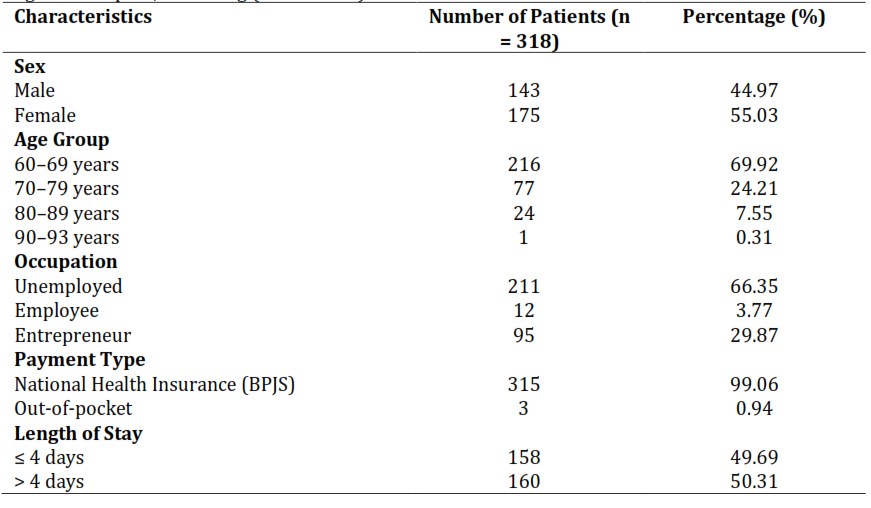Main Article Content
Abstract
High-alert medications (HAM) are drugs that require strict monitoring due to their high potential to cause significant harm if used improperly. Patient safety incidents can lead to adverse outcomes, including suboptimal treatment effectiveness and increased healthcare costs. This study aimed to analyze adverse events (AEs) resulting from the use of HAMs, identify the types of HAMs that contributed to AEs, and determine the average direct medical costs incurred by elderly patients at K.R.M.T. Wongsonegoro Regional Hospital, Semarang. This research employed a retrospective cross-sectional observational design using secondary data. The study population consisted of elderly patients who were administered HAMs. The sample size was determined using the Design Effect (DEFF) statistical method for cluster surveys, resulting in a sample of 318 patients who met the inclusion and exclusion criteria. Descriptive analysis was used to assess HAM utilization, AE incidence, and direct medical costs borne by the hospital. The results showed that 40.88% of elderly patients had a history of diabetes mellitus. The most frequently administered HAM was the prandial insulin analogue, insulin aspart injection 100 IU/mL (7.29%), which also accounted for the highest number of AEs (30%). The average direct medical cost for patients without AEs was IDR 7,020,721.24, while for those who experienced AEs, the cost increased to IDR 9,493,661.29. These findings indicate that hypoglycemia caused by prandial insulin analog—insulin aspart injection 100 IU/mL, penfill—was the most common AE among elderly patients. Moreover, the average direct medical cost was significantly higher in the AE group than in the non-AE group.
Article Details

This work is licensed under a Creative Commons Attribution 4.0 International License.
